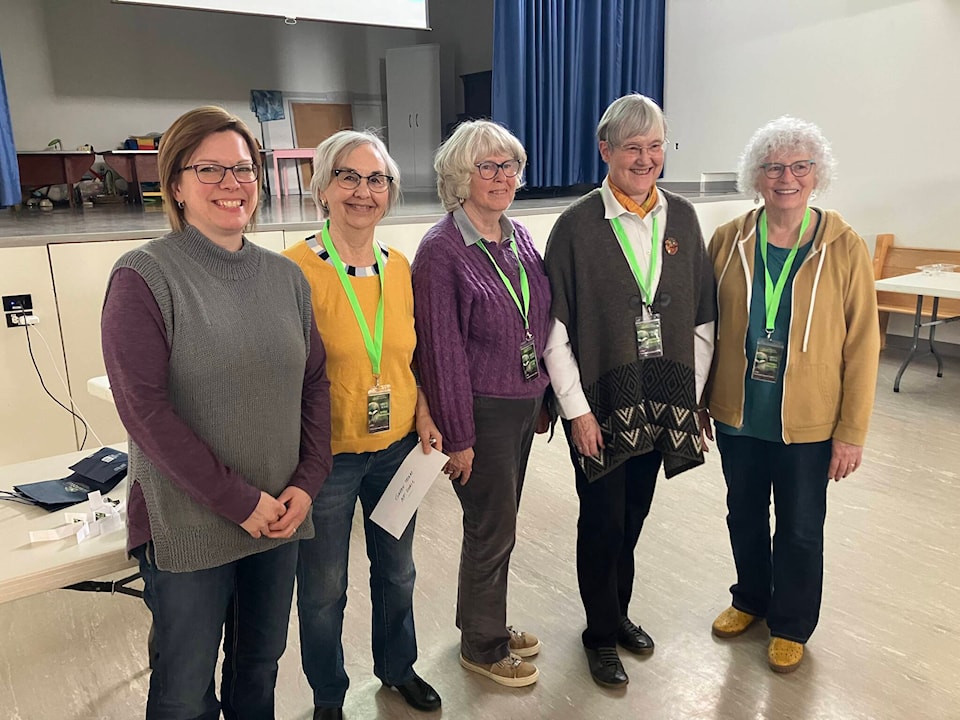As the warmth of spring moves in, prepping for exceptional gardening results is top of mind for many local residents.
To that end, the Green Team at St. Andrew’s United Church hosted a composting workshop on March 24 which featured Jennifer Neufeld of the Strathmore-based Flowing Springs Permaculture & Soil Health.
“We are introducing different kinds of composting methods so that people have some options of what method might work best for their situation,” said Neufeld.
“Everybody has different amounts of waste that they produce, and they also have different goals. One goal might be simply to reduce waste, so they are throwing less in the garbage. Another might be to produce a product that they can use to put on their gardens or houseplants,” she said.
“So it depends on what their goals are.”
Neufeld outlined different composting methods, how they are used, and some of the pros and cons of each.
These run the gamut from easy (static) composting which includes collecting items like leaves, grass, plants and weeds, old potting soil, and soft plant stems.
From the kitchen, items can include fruit scraps, vegetable trimmings, egg shells, tea bags, coffee grounds with filters, and shredded paper.
Pros of this system include its simplicity — you make layers of green and brown materials.
Cons include that it takes one to two years to mature, it doesn’t kill pathogens or weed seeds, and you need to maintain moisture for success.
Thermophilic composting requires woody materials like wood chips, green materials like coffee grounds and garden/kitchen compost, and high-nitrogen items (a bucket of spent brewing grains or manure).
Pros are that it promotes the growth of good microorganisms, kills pathogens and weed seeds, quickly breaks down organic materials to be used as compost sooner and that it’s inexpensive and fun, said Neufeld.
The cons are that the method requires careful monitoring and the need for the proper proportion of greens and browns for the pil to compost properly.
Finally, there is the use of earthworms.
According to Neufeld, red wigglers are the most common type of compost worms.
“They are excellent at taking waste materials and making a rich organic soil amendment full of plant nutrients and beneficial microbes.
“They are little machines that can turn our food waste into productive and very, very nutrient-dense compost that we can use on our plants. They work 24/7, they stay put, they do the work. We just have to feed them,” she explained.
“It’s very simple in concept. People need to try it and experiment to get the hang of how much food to add. How wet and how dry should the bin be? How often should I feed them?”
Neufeld said learning more about composting in general helps make folks feel more confident and willing to give it a try.
“For places where there are municipal composting programs, it’s also easy to throw something into a green bin, and you also feel better knowing that it’s not going to the landfill,” she said.
“With composting, it does take a little bit of work, and a bit of planning. So it’s going to be those who are interested in either wanting the compost itself or wanting to take ownership of the process.”
For Neufeld, it’s a field of work that brings fulfillment.
“I love permaculture, soil health, and learning about biology,” said Neufeld.
“I also think about how do I be an active participant in creation; in helping it to be what it’s intended to be. I have a passion for these things — how do I grow food in a way that is nutrient-dense and healthy for my family? And I enjoy gardening!
“I also want to enable people to grow more of their own food.”
